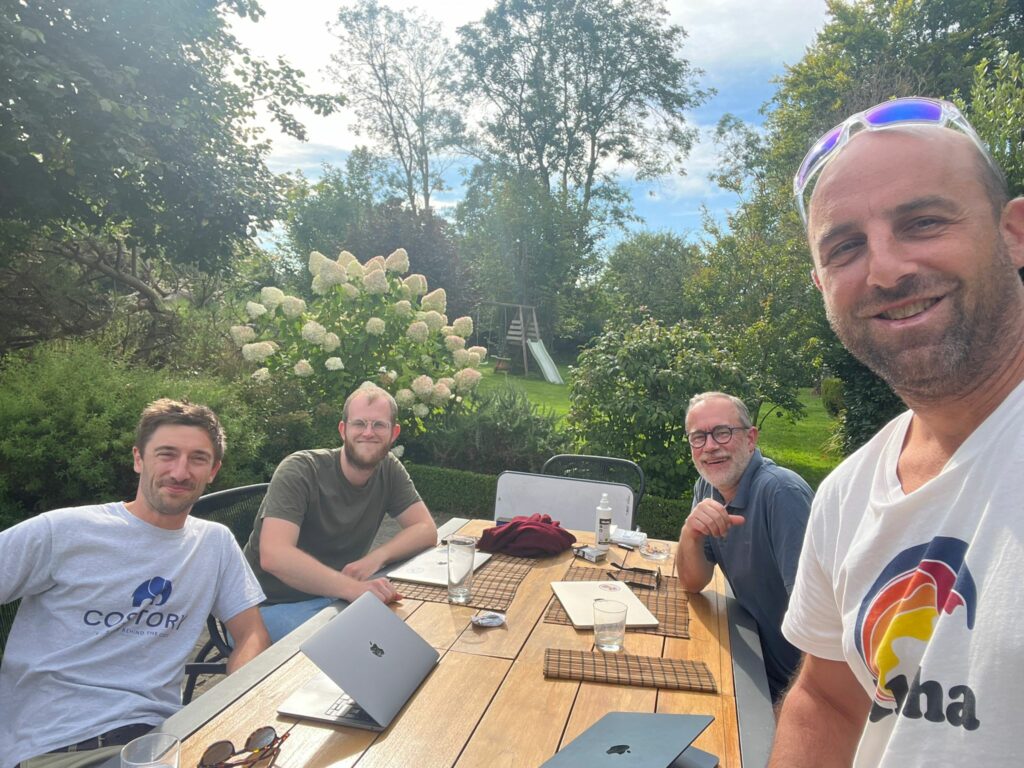We experienced it firsthand: cloud cost responsibility usually ends up with someone who didn’t ask for it. In 99% of companies using AWS or GCP, there’s a Designated FinOps often a staff engineer, a lead infra, or even the CTO who’s the only one with enough technical and business context to do the job. And no solution today truly addresses the problem they face.
A messy, manual reality
This responsibility usually lands on a single person the only one who understands both infra and business context.
Their main tool? A browser with 20 tabs open: Cost Explorer with their go-to filters and group-bys, GitHub to check the latest release, Datadog to match usage with spend, finance dashboards to validate client activity, and Slack when she/he needs to ask around. Somewhere in the middle of it all, a spreadsheet tries to hold things together.
When that person leaves, their mental model of cloud spend leaves with them. And that’s a serious risk, especially when infrastructure is often a tech company’s second-largest expense, right after payroll.
Why dashboards aren’t enough
The two default solutions offered by cloud providers, FinOps vendors, and internal data teams have been dashboards or black-box cost optimization.
Cost optimization vendors optimize specific parts of the stack, like scheduling idle K8s nodes or auto-committing reserved instances. Some of these tools are excellent and used by our clients. But they don’t help you understand your cloud bill: they reduce it temporarily, without explanation. And an optimized but useless service is still a useless service.
Dashboards are everywhere. Native tools from AWS, Azure or GCP are good enough. Open-source frameworks like FOCUS make billing data easier to ingest in an internal data warehouse. Most companies already use BI tools like PowerBI or Looker to create cost dashboards internally.
Dashboards are no longer a differentiator, they’re a commodity.
Visibility is not the problem. The real challenge is understanding.
A dashboard won’t:
- Tell you why S3 spend just spiked
- Link that spike to a specific release
- Know that traffic increased because of a campaign
- Suggest where to look next
The solution we wished we had
The ideal FinOps tool isn’t a better dashboard. It’s a system that thinks like the Designated FinOps, the person juggling business context, engineering intuition, and billing data.
This system should:
- Collect raw billing exports
- Enrich them with events (deployments, incidents, traffic, customer activity)
- Detect relevant cost changes
- Provide immediate context and a credible starting point
It doesn’t replace engineers. It empowers them to investigate faster and fix with confidence.
Why us
We’ve been in this exact position.
All co-founders met at Tinyclues, a SaaS startup acquired by Splio in 2024. There, we built ML systems that could parse unstructured signals and surface the next best action for marketing teams.
Now, we’re applying that same playbook to cloud cost understanding:
- Not just surfacing raw data, but generating leads
- Not just alerting, but reducing noise with context
- Not just visibility, but understanding

What we’re building
We’re building a system that:
- Reduces reporting overhead and pinpoints possible root causes — not just a shiny chart It brings immediate context so infra teams can jump straight into investigation, fix issues faster, and spend less time gathering data.
- Moves from active investigation to passive detection The system watches in the background and pings you only when something unusual happens.
Onboarding takes minutes. And usage grows naturally as FinOps use cases appear across the org.
Join us
We’re currently onboarding early adopters, principal engineers and infra teams who feel this pain and want to fix it for good.
If that’s you, let’s talk.
